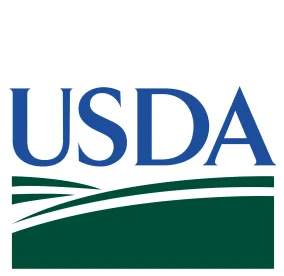Key Takeaways:
-
What Happened: USDA published guidance describing two pathways for regulated parties to demonstrate that a product is exempt from federal bioengineered food labeling requirements.
-
Who’s Impacted: Food manufacturers, importers, and certain retailers that sell or distribute bioengineered foods or food ingredients.
-
What Should They Consider Doing in Response: Review internal processes to identify covered products and maintain records to demonstrate that such products either include bioengineered foods disclosures or are exempt from disclosure.
In December 2018, the U.S. Department of Agriculture (USDA) Agricultural Marketing Service (AMS) promulgated a new National Bioengineered Food Disclosure Standard (NBFD Standard or the Standard) to require food manufacturers, importers, and other entities that label foods for retail sale to disclose information about bioengineered food and bioengineered food ingredients. While compliance with all of the Standard’s requirements will not be mandatory until January 1, 2022, a “voluntary compliance period” began on January 1, 2020, during which time regulated entities (above $10 million in gross receipts) must identify covered products and may (but are not required to) disclose bioengineered foods and ingredients.
On July 2, 2020, AMS published final guidance with accompanying “frequently asked questions” (FAQ) documents to facilitate regulated entities’ compliance with the Standard’s disclosure exemption for refined foods and ingredients that do not contain a “detectable amount” of modified genetic material. The first guidance document describes how a refining process may be validated such that a food or ingredient refined through that process need not be further tested for modified genetic material. The second document addresses acceptable testing methods of specific foods or ingredients.
This new guidance is not binding on regulated entities but is intended to provide clarity regarding the existing requirements established under the final NBFD Standard.
Background
Unless otherwise exempt, the presence of a bioengineered food or food ingredient must be disclosed in product labeling by the regulated entity. Three categories of entities are responsible under the Standard: food manufacturers, food importers, and food retailers that package food or sell food in bulk containers or displays.
The Standard incorporates the statutory definition of “bioengineered food,” which means a food “that contains genetic material that has been modified through in vitro recombinant deoxyribonucleic acid (rDNA) techniques and for which the modification could not otherwise be obtained through conventional breeding or found in nature.” 7 C.F.R. § 66.1. However, a food does not contain modified genetic material if the genetic material is “not detectable,” which can be demonstrated via:
-
records to verify that the food is sourced from a non-bioengineered crop or source;
-
records to verify that the food has been subjected to a refinement process validated to make the modified genetic material in the food undetectable; or
-
records of testing appropriate to the specific food that confirm the absence of modified genetic material.
7 C.F.R. § 66.9(a). A regulated entity may use any of these three methods to determine that no modified genetic material is detectable in their product. AMS’s latest guidance documents clarify the second and third of these options: validating refinement processes and testing the specific food.
Validating Refinement Processes
In its final guidance, AMS identifies and discusses eight general steps to validate a refinement process that makes the modified genetic material undetectable:
-
Identify raw materials, ingredients, and product-contact materials.
-
Define characteristics and intended use of end product.
-
Define the sequence and interaction of all processing steps used to arrive at the end product.
-
Identify the key steps or parameters (e.g., time, temperature, or content level) that may influence the end product’s characteristics and its ability to meet specified requirements.
-
Assemble relevant validation information that demonstrates that the refinement process works as intended.
-
Continually verify that the process is operating as validated.
-
Revalidate the refinement process if significant changes are made to the process.
-
Maintain records of the validation and ongoing verification.
AMS clarifies that a refining process may be validated as a whole; individual steps do not require validation. Thus, a process may be validated to show that any modified genetic material has been rendered undetectable by the time the food or ingredient has reached a certain step, but it is not necessary to identify the exact point at which that material became undetectable. If a part of a production process is common to multiple ingredients, that common part of the process may also be validated.
Validated processes do not need to be re-validated unless a regulated entity makes a “significant change,” which AMS defines as “changes to key steps that could impact or affect the process’s ability to make modified genetic material undetectable (i.e. time, temperature, content level).” Minor changes that do not hinder this ability do not require revalidation.
Testing the Specific Food
AMS’s testing methods guidance identifies five factors “critical” for ensuring that a food-specific testing method is “fit for purpose.” According to AMS, when testing for modified genetic material in a food or ingredient, a regulated entity should ensure that its testing method is:
-
Specific to the analyte of interest;
-
Appropriate (validated) for the product or commodity being tested;
-
Accurate, precise, robust, reliable, and reproducible;
-
Have appropriate sensitivity for the measurement value; and
-
Be accessible and practical for testing needs.
To this end, AMS recommends that regulated entities use validated methods accepted by international bodies or validate their own methods to detect modified genetic material.
AMS specifically notes that while polymerase chain reaction (PCR) is the most widely used and commercially accepted test method for determining whether modified genetic material is detectable in a food or ingredient, it may not be appropriate for all target analytes or products. For instance, highly refined foods may contain lipids that interfere with a PCR reaction. Regulated entities should therefore follow appropriate procedures to either remove PCR-inhibiting compounds or identify alternative testing methods to ensure compliance with the Standard.
AMS also clarifies that testing laboratories must meet the above standards, and recommends that regulated entities choose to work with laboratories that adhere to the ISO 17025 standard for testing and calibration laboratories.
Compliance Determined by Recordkeeping
Both of AMS’s new guidance documents reinforce that it does not intend to test individual food products to ensure compliance with the Standard’s disclosure requirements. Rather, AMS may audit a regulated entity’s records to determine whether they have complied with those requirements. Regulated entities should therefore maintain “customary or reasonable records” for at least two years beyond a product’s date of sale or distribution for sale, which may include supply chain records, supplier attestations, third party certifications, laboratory testing results, validated process verifications, or other records normally generated or maintained by the business.






 />i
/>i

